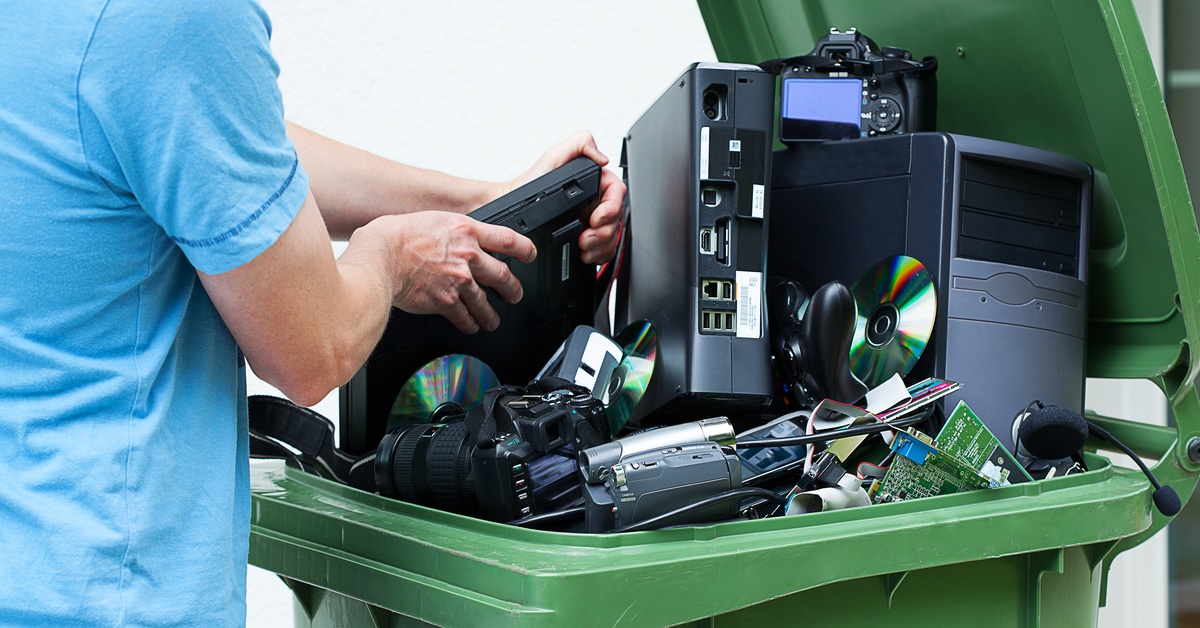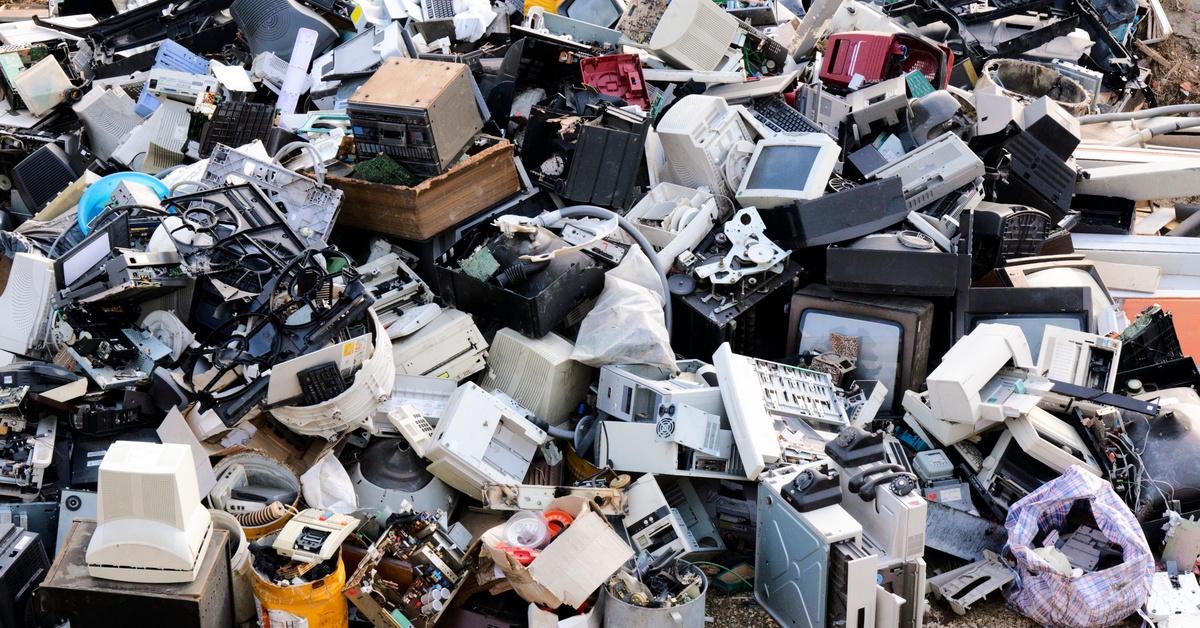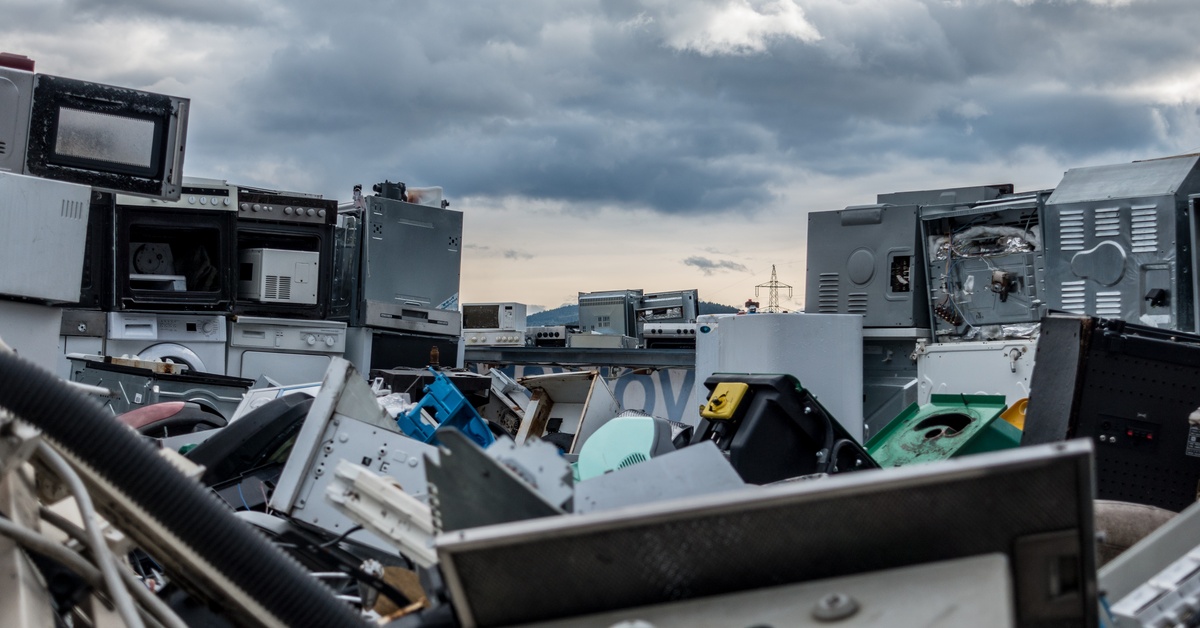
The world generates mountains of electronic waste (e-waste) every year, and they’re only likely to grow larger. While technology drives innovation and convenience, the rapid turnover of gadgets leaves behind a significant environmental footprint. However, a circular economy offers a promising solution to this challenge.
Unlike traditional linear economies, which follow a take-make-dispose model, a circular economy aims to increase the lifecycle of products through repair, reuse, recycling, and recovery. Shredding plays a major role in a circular economy for electronics. By learning more about this process, consumers and manufacturers alike can make better, more informed decisions that benefit everyone.
The Problem of E-Waste
E-waste is one of the fastest-growing waste streams globally, and its impact is alarming. Here’s why managing e-waste is a critical global issue:
- Loss of valuable resources: Electronics are packed with valuable metals like gold, silver, and copper. When discarded improperly, these resources are lost forever.
- Mountains of waste: With smartphones, laptops, and other devices becoming obsolete at lightning speed, the sheer volume of e-waste is unmanageable for many countries.
- Environmental impacts: The production of electronics requires significant amounts of energy, water, and raw materials. Overuse of these resources can result in deforestation, water pollution, and the depletion of nonrenewable resources.
- Human health risks: Burning or dismantling electronic devices can release toxic chemicals into the air, causing respiratory problems and other serious health issues.
E-waste must be handled appropriately to minimize its environmental and health implications. This is where electronic shredding becomes vital.
What Is Electronic Shredding?
Electronic shredding involves breaking down electronic devices into smaller, recyclable components. Here’s a simplified overview of how it works.
Step 1: Collection and Sorting
The process begins with the collection of discarded electronic devices. These items are then sorted based on their type, size, and material composition to streamline the shredding process.
Step 2: Manual Disassembly
Before shredding, specialized components, such as batteries, circuit boards, and hazardous materials, are manually removed to ensure safety and maximize recycling efficiency.
Step 3: Shredding the Electronics
The remaining materials are fed into industrial shredding machines, which reduce them into smaller fragments. These fragments are easier to handle and process for further recycling.
Step 4: Separation of Materials
Once shredded, advanced techniques like magnetic separation, eddy currents, and optical sorting are used to separate materials such as metals, plastics, and glass.
Step 5: Recycling and Repurposing
The separated materials are then sent to recycling facilities, where they’re processed to create raw materials. These can be used in manufacturing new products, reducing the demand for raw resources.
The Environmental Benefits of Shredding E-Waste
Shredding e-waste provides numerous environmental benefits, making it a critical component of sustainable waste management.
Reduction in Landfill Waste
Shredding e-waste significantly decreases the volume of waste that ends up in landfills, conserving valuable land space and preventing harmful chemicals from contaminating soil and groundwater.
Conservation of Natural Resources
By recycling materials extracted from shredded e-waste, fewer raw resources such as metals, minerals, and fossil fuels must be mined, leading to a more sustainable use of Earth’s finite resources.
Lower Energy Consumption
Processing recycled materials often requires less energy than extracting and refining raw materials, reducing overall energy use and associated carbon emissions.
Prevention of Toxic Chemical Release
Efficiently shredding and sorting e-waste minimizes the risk of hazardous substances, such as lead and mercury, being released into the environment, protecting ecosystems and human health.
Support for a Circular Economy
Shredding e-waste enables valuable materials to re-enter the production cycle, fostering a circular economy where resources are reused and repurposed rather than discarded.
Economic Opportunities Created by E-Waste Shredding
In addition to the environmental benefits, there are also various economic benefits to e-waste shredding.
Job Creation
The rise of e-waste shredding operations has led to the creation of jobs across various sectors, including collection services, recycling facilities, and transport logistics.
Revenue from Recovered Materials
Valuable metals like gold and copper extracted through shredding can be sold to manufacturers, creating an additional revenue stream for recycling companies.
Cost Savings for Companies
Using recycled materials often costs less than sourcing virgin materials. Companies that integrate recycled raw materials into their supply chains can significantly reduce production costs.
Boosting Local Economies
When e-waste shredding is implemented locally, it stimulates regional economic growth by creating supply chains, supporting businesses, and increasing employment.
Innovating Sustainable Practices
E-waste shredding technology is continuously evolving, with innovations aimed at increasing efficiency and minimizing environmental impact. Advanced sorting systems, enhanced material recovery techniques, and automation are driving sustainable practices in the industry.
Challenges and Solutions in Electronic Shredding
Despite progress, there are still a few challenges to implementing shredding that individuals and businesses must overcome.
High Initial Investment
Setting up electronic shredding facilities requires substantial capital investment. However, governments and eco-conscious investors can provide subsidies, incentives, or funding programs to offset these costs.
Material Cross-Contamination
Improper separation techniques can lead to contamination of recyclable materials, reducing their usability. Investing in advanced separation technologies, such as optical and density-based separators, ensures precision in material classification.
Lack of Consumer Awareness
Many consumers are unaware of proper e-waste disposal methods or the benefits of recycling. Public awareness campaigns and retailer buy-back programs can encourage responsible e-waste disposal.
Regulatory Compliance
Navigating e-waste disposal regulations can be complex for companies. To mitigate this, partnering with certified e-waste shredding facilities ensures compliance with local and international regulations.
Economic Barriers
The cost of properly disposing of e-waste can be a barrier for both consumers and companies. However, governments can provide tax incentives or subsidies to encourage proper disposal and recycling.
Lack of Infrastructure
Many countries lack proper infrastructure for e-waste management, making it difficult to dispose of e-waste safely and responsibly. Luckily, organizations such as the Global E-Waste Statistics Partnership are working toward building infrastructure and increasing capacity for e-waste management in these regions.
How To Choose a Responsible E-Waste Shredding Partner
If your organization is looking to contribute to a circular economy, choosing the right shredding provider should be your first step. Firstly, select a partner certified by recognized authorities to ensure proper e-waste recycling practices. In addition, ensure they have a proven history of safe and efficient e-waste shredding.
Advanced shredding techniques and separation processes maximize resource recovery, so inquire about the company’s methods. Your shredding partner should provide detailed reports on how e-waste is processed and where recovered materials end up. Transparency is key in ensuring your partner complies with ethical labor practices. With these considerations in mind, you can partner with a company that prioritizes environmental sustainability at every step.
The Future of Shredding in a Sustainable World
The role of shredding in a circular economy for electronics is undeniable. However, its success hinges on global collaboration. Policymakers, businesses, and individuals must join forces to invest in responsible shredding solutions to reduce the burden of e-waste and pave the way for a sustainable future.
Are you interested in how electronic shredding can benefit your company? Start today by exploring certified e-waste shredding solutions offered by Intellishred. See for yourself how our secure computer destruction can set you on the path toward a sustainable, circular business model.







